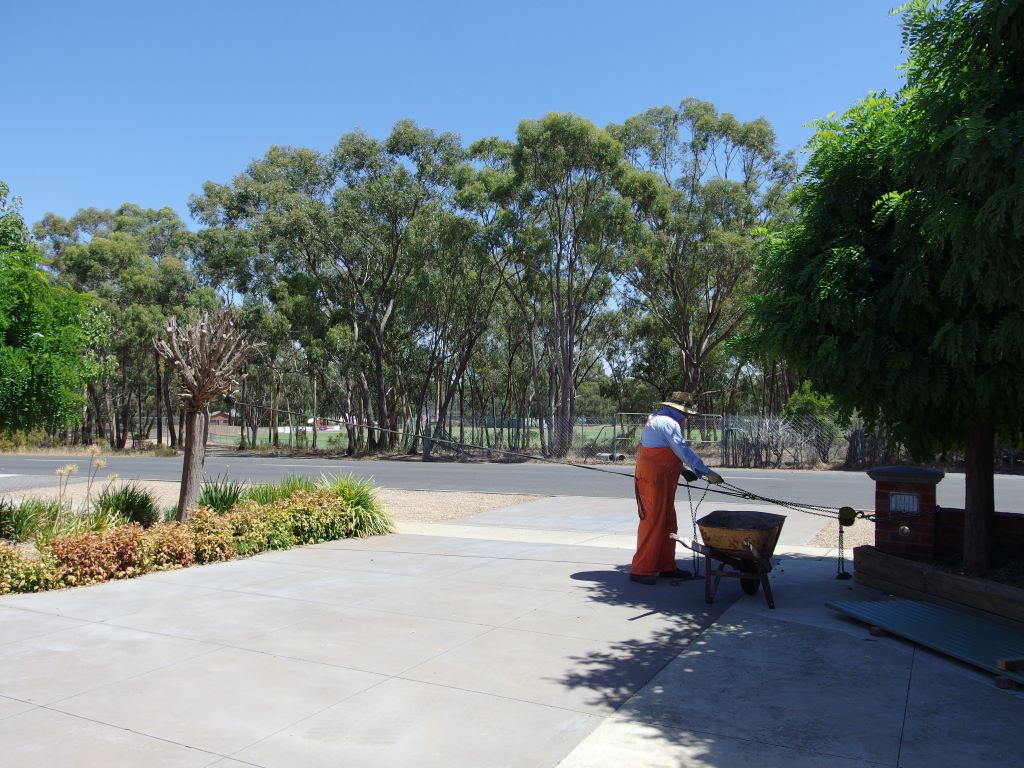2019 JANUARY
What seemed to be an excessively hot summer continued to keep us confined indoors for much of the daytime hours.
I rose early most days, in order to water the recently planted shrubs, plus the pots brought from our old home. With permanent water restrictions in place for the area, watering with sprinklers or fixed systems was confined to the hours between 6pm and 10am the next morning. Quite adequate times, I thought, and justifiable considering the city’s past water history and the fact that central Victoria, north of the Great Dividing Range is drier than the south. Bendigo’s average rainfall is 510mm, or 20 inches on the old scale, whereas in our previous outer eastern area of Melbourne averaged around 800 mm or 33 inches. Quite a marked difference.
From the 1850’s, the issue of supplying water to the goldfields’ growing population had been addressed in various ways, some of them advanced for the times. The Loddon and Campaspe Rivers, to the west and east of the growing town, were obvious water sources and pipeline systems were built. For a while, it could be argued that Bendigo was better supplied than parts of Melbourne.
As with most of the State, the Millennium Drought, from 1997-2009, severely strained the Bendigo water supply system, with the relevant water storages dropping to 4% capacity amid real fears that drinking water would run out altogether, the city had an extended period of Stage 4 water restrictions, meaning that the piped household supply could only be used for cooking, domestic cleaning and hygiene. No watering of gardens or lawns. Clearly, gardens suffered. An earlier photo of our new house, shows a row of Westringia bushes along the front garden, which no longer exist. I assume they were casualties of the big dry.

Front garden before the worst of the drought impact
Another legacy of those drought years has been the decline of grass lawns – on nature strips in the newer suburbs and in domestic gardens – and replacement with, mostly, gravel and stones. Makes much more sense in a semi-arid environment, in terms of water conservation, although it could be argued that grassed areas reduce temperatures. I’m happy to stick with the stone mulched surfaces, and plants lots of shrubbery to counter any heat sink effects.

Gravelled nature strips
John, of course, was very happy with our stone mulched surfaces – no grass to mow! In that respect, he had not really been thinking things through, before our move, and had duly included our two lawn mowers and the whipper snipper in the transferred belongings. Since then, the penny had dropped and this month he advertised and sold these totally redundant machines.
I was pleased to find out that a response to the big drought had been the completion of a water pipe line linking the Goulburn River system to the Bendigo water supply, providing greater water security for the time being.
So, no complaints from me about getting up early to ensure my watering was done.
When we inspected the new house, back in July, the various deciduous trees were, of course, bare. By the time we moved in, spring had well and truly arrived and along with it, a new crop of greenery on said trees. This included what turned out to be five moptop trees planted at the front. These were not a specimen I had encountered before, but seemed quite popular in these parts. Frankly, they are not an ornamental tree I would plant, for preference.
The moptop closest to the street seemed very tardy in putting out its new shoots. At first, not knowing anything about them, we thought this might be normal variation, but it eventually became obvious that it was deceased. We decided it should come out and be replaced – but not with a moptop.
John was confident he could manage the tree removal himself – after all, he had tackled bigger trees at our old home, over the years. He was younger then, though! And had also been able to use the winch on the old Landrover in one lot of tree felling and root system removal. (Complete with very large European wasp nest, but that is another story. )
John’s genius solution to loosening the dead tree was to set up a winch between the brick pillar containing the mailbox and the tree. The winch would be gradually tightened, and the tree would be pulled to one side and eventually pulled out. That was the theory… In practice, the moptop proved the immovable object. The mailbox pillar separated from brick fence beside it and began to move. At that point, tree removal was abandoned for the time being…

Fine in theory…

April 18, 2024 at 11:01 pm
Oh dear, I hope his bricklaying skills are better.